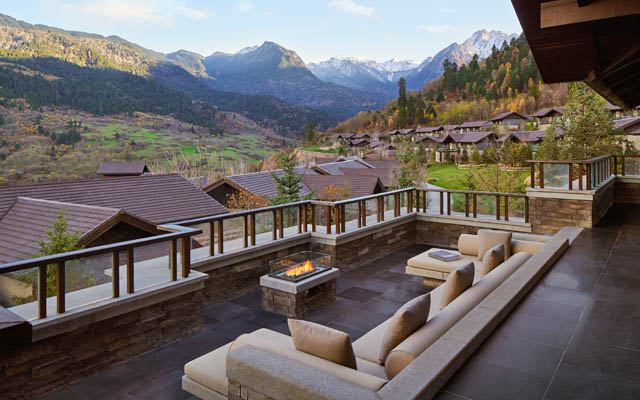With the return of travel, consumer preferences and expectations have evolved as indicated by the increased demand for all things responsible yet purposeful. This heightened sense of self-awareness and personal lifestyle has triggered changes in the way hospitality stakeholders personify their brand promise.
Integrated luxury hospitality designer WATG reveals five emerging trends that will shape Asia-Pacific’s hospitality industry in shape the hospitality industry in the months ahead.

Luxury brand collaborations fuelled by the experience economy
WATG observed a growing prominence of luxury fashion and lifestyle brands within the hospitality space as they seek to capture growth in the ‘experience’ economy by aligning their brands with aspirational High-Net-Worth Individuals’ (HNWIs) recreation and way of life. Some examples include the emergence of pop-up beach clubs like Fendi Puente Romano and Dior Bali, exclusive suites within famed hotels such as the Bentley Suite and Dior Suite at St Regis NYC, entire luxury hotels like Bulgari, Armani, and Baccarat, and the proliferation of branded residences by such brands.
WATG’s collaborations with Bulgari and the newly-opened JW Marriott Jeju Hotel & Resort in Jeju, South Korea, showcase the timeless glamour and heritage of the renowned Italian watch and jewellery maker, as well as the Louis Vuitton Deep Time luxury jewellery exhibition held at Rissai Valley, a Ritz-Carlton Reserve nestled in Jiuzhaigou, China – Ritz-Carlton’s first all-villa resort.
Private members clubs targeting daycations sector
Growth in concept with the line blurring between hotel and club is observed as hotels now turn to the local community for patronage. An array of amenities is activated to create club-like concepts for these daycations. The subscription model these clubs are based on offers hotels more diversified and stable revenue streams than from transient trade. Rosewood, Six Senses and Aman are all opening private clubs for local residents integrated within urban hotels. At the same time, there is growth and innovation from the traditional private members club space targeting specific market segments with increasingly curated offering comprising a guestroom component or offering retreat concepts away from the city.
Branded ecosystems
Hotel operators are extending their services and brands beyond traditional hotels into other adjacent lifestyle concepts. This includes the branding and operation of a range of synergistic components within an urban mixed-use development including residences, wellness hubs, serviced offices and private members clubs. Accor, for example, has launched a dedicated service line Accor One Living to focus on the development, operation and branding of these mixed-use spaces with a focus on creating complementary experiences under a single brand for a range of users from guests, onsite residents to the local population. Hotel operators are also continuing to expand their presence into non-hotel leisure experiences through the branding and management of standalone vacation rentals, superyachts and private jets.
Scaled-up accommodation
The post-lockdown trend for multi-generational and blended travel is having a demonstrable impact on the demand and supply for larger accommodation typologies within a resort setting. Hotels are being designed today with a greater consideration for this market. Larger villas are making up a greater proportion of total inventory. Family-friendly in-villa amenity is being bolstered while flexibility to cater to the different needs of a travel group is being designed into the product. This growing transient multi-generational demand dovetails neatly with the growth of branded residences, creating an all-round beneficial scenario from a cashflow and end user demand perspective.
Amenity innovation to go against the conventional
As the experience economy enters a new phase, there is an arms race underway in the hospitality sector for amenity programming that helps destinations to stand out from the crowd. Developers are going to extra lengths, investing in wow-factor concepts that capture the imagination and place the destination on the map. Leveraging the unique context of each destination, including natural assets and local cultural themes, is central to anchoring amenities and providing one-of-a-kind experiences that cater to growing expectations for authenticity. Partnerships with third party specialist operators, brands and celebrity endorsed concepts are also adding a new dynamic and visibility to the destination offering that speaks directly to the targeted guests. Be it kids’ clubs, sports and fitness facilities, wellness programming, cultural experiences and translating through into the F&B offering and poolside experience, each new resort requires a new layer of thinking in terms of experience curation through the guest stay.
“As the hospitality landscape evolves in Asia-Pacific, we must rethink what this means to us, to our clients, their guests and to the planet. It is imperative that we continue to innovate as we strive to respond quickly to market needs, to elevate guest experiences and recapture revenue to optimise returns for our clients. Backed by a thorough research-led framework, our deep understanding of what today’s travellers seek allows us to set new standards for what guests can expect in a new era. We believe that these trends don’t just guide our clients to build a more resilient business model but also shape our industry to ensure we can keep on thriving in 2023 and beyond,” said Guy Cooke, associate principal and studio director of advisory services, WATG Singapore.




















